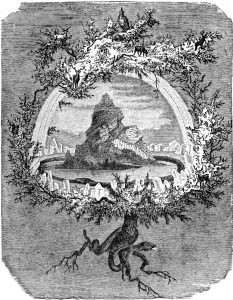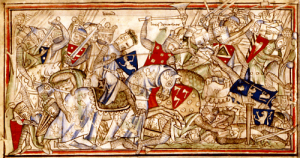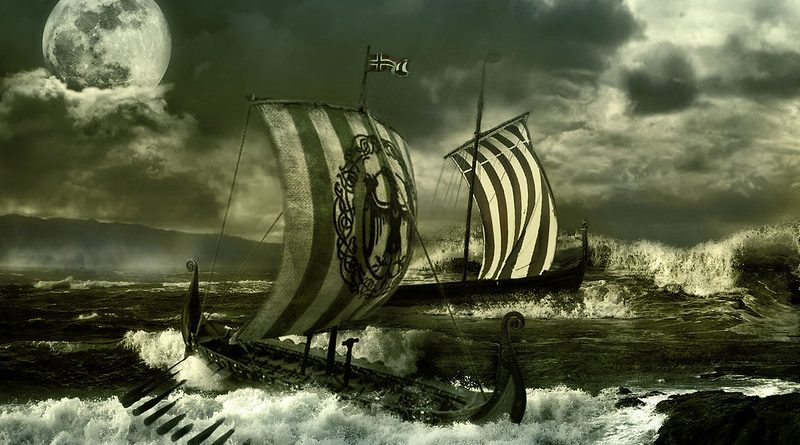Who Were The Vikings?
Often misconstrued in contemporary times as a culture of bloodthirsty yet noble savages, the Vikings’ historical legacy is in fact far more complex and important. A race originating from modern day Scandinavia, the Vikings expanded their influence throughout Europe through the implementation of their unparalleled seafaring abilities. A pivotal element of European history, particularly in Scandinavia, the Viking Age extended from roughly 793-1066 AD. The Vikings used their seafaring skills to embark on nautical journeys of trading, raiding and conquest from which their bloodthirsty perception was cultivated. Despite this, the Vikings left behind a number of impressive historical achievements and innovations in a number of cultural spheres, including artistic and military ones.
Viking Beliefs
There is very little historical evidence detailing the Vikings’ religious beliefs and rituals. However, we do know that they adhered to a multi theistic pagan religion. Owing to the ‘Codex Regius’, the most substantial historical source regarding Viking religion, we know that the Vikings believed that the world of mortals was one of nine realms, bound together by the mystical ash tree Yggdrasil.

“The Ash Yggdrasil” (1886) by Friedrich Wilhelm Heine.
The most important of these realms were Asgard, the home of the Viking gods and Midgard, the home of the mortals. The sophistication of Viking mythology suggests the culture’s detailed complexity. Towards the end of the Viking Age however, the expansion of Christianity all but erased pagan beliefs from the region, with the race eventually converting to the Abrahamic religion.
Viking Sea Skills
Due to the plethora of archaeological evidence, we can discern that there were a variety of differently designed naval vessels built by the Vikings. The most important and well-known of these was undoubtedly the Long Ship, which was equipped with both sails and rows of oars. The Long Ship’s design was tailored for warfare, attributing it with speed and agility to efficiently navigate the waters whilst also having a large capacity to allow deployments of troops in the event of invasion. Other important Viking sea vessels included the Karve, built for more peaceful means such as trading and the Knarr, similar to the Longship but built for long-lasting sea-faring voyages. As a result of the Vikings’ superior construction and navigation capabilities, they were able to accomplish unparalleled feats of seafaring for their time, their most notable accomplishment being the traversing of the Atlantic Ocean to North America, the first Europeans to do so.
Viking Weapons
Despite there being minimal archaeological evidence of Viking weaponry, there are still sufficient records to create a fairly detailed impression of the importance of armaments to Viking culture. Indeed, custom dictated that all free Norsemen were encouraged and required to own and carry weapons at all times, with the armaments reflective of a man’s social stratification. Whereas a more wealthy individual would often carry an entire armoury of weapons-spear, wooden shield, battle axe/sword. The spear was used by all different kinds of social classes due to its cheapness. It was commonly used amongst the peasantry as well as the warrior elite. Contrastingly, swords were far more expensive to build and were thus more indicative of one’s high social standing. They would be used in battle alongside shields, which bore a distinctive circular design. These were made of wood and often reinforced with materials such as leather or sometimes even iron. Other weapons included the axe, a cheaper and more common alternative to the sword, which was also used as a tool, and the bow and arrow, which similarly had multiple purposes, used in both battle and hunting.
Viking Conquests
Due to their military capabilities, reinforced by their seafaring and weaponry strengths, the Vikings were able to embark on a period of brutal conquest across the Atlantic. It is believed that the Vikings were motivated into expansion of their territory out of retribution against Christian Europeans for their own conquests on the Viking homestead. While some believe these conquests were triggered by overpopulation, thus facilitating the need for expansion, there is no definitive evidence to prove this. Perhaps the most notable Viking expansion was into Great Britain. This began at the end of the 8th century as the Vikings targeted monasteries. These raids became more and more damaging, with the Vikings eventually overrunning the majority of Anglo-Saxon England following the seizure of York. However, Viking control over the British Isles was to be somewhat intermittent, lost entirely following the failed invasion by Norwegian King Harald Hadrada. Viking conquests occurred throughout mainland Europe as well, notably in Normandy, Iberia, Eastern Europe and even the Middle East. Their settlements in the North Atlantic region are arguably more impressive. Maintaining impressive colonies in Iceland and Greenland, the Vikings were also the first known colonists of North America. Led on an expedition by Leif Erikson, Viking ships landed in the New World-namely Newfoundland in Northeastern Canada. While not a particularly long-lasting colony, the Vikings’ ability to traverse the Atlantic hundreds of years before any other European civilisation illustrates the strength of their seafaring abilities. While their conquests were less rooted in the notions of empire building than other major historical civilizations, they are nonetheless highly impressive.
What Happened To The Vikings?
There is a sense of ambiguity attributed to when the Viking Age effectively ended. As they weren’t a specific empire, it is difficult to compare them to other cultures. However, as the Vikings were defined by their bombastic military raids of other cultures, one can determine that when these raids ceased, then so did the Vikings. Thus, 1066 is often attributed as the end of the Viking Age. This marked the last significant Viking raid into European territories with the Battle of Stamford Bridge wherein Norwegian King Harald Hadrada was killed in a bid to seize control of English territory.

Battle of Stamford Bridge. From 13th century Anglo-Norman manuscript.
Other factors included the increasing prevalence of Christianity in Viking lands, which gradually began to eradicate Norse influence, taking moral argument with the Viking preoccupation with violent raids. In addition, whereas at the beginning of the Viking Age, mainland European territories lacked strong, centralised and organised authority, leaving them vulnerable to the Viking’s shock tactics. By the end of this period however, these European territories had long-exceeded the Vikings in military organization and sophistication, thereby allowing them to effectively repel Viking attacks. Now somewhat outdated, the Vikings were unable to keep up with fast-changing times and faded into history.
Viking Ruins
While the Vikings did not leave behind an illustrious empire, they nonetheless spread their influence across the globe due to the prevalence of their seafaring raids. Subsequently, Viking ruins are dotted throughout Europe and beyond, extending from the Eastern fringes of the continent to the Canadian coast. Notable Viking ruins include Oseberg, a ship grave in Norway wherein several of the burnt ships in Viking funerals were excavated, Ribe, believed to be the oldest Scandinavian city in existence and most impressively L’Anse aux Meadows, a Viking settlement in Newfoundland, Canada discovered in the 1960’s, which served as the first definitive proof of Viking influence in North America.




